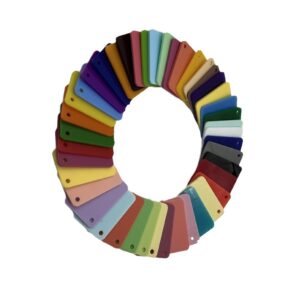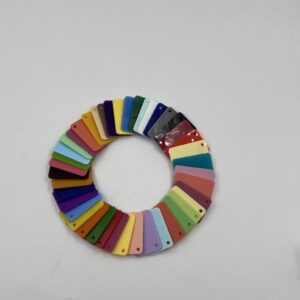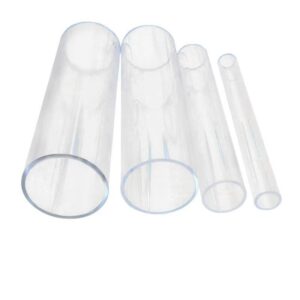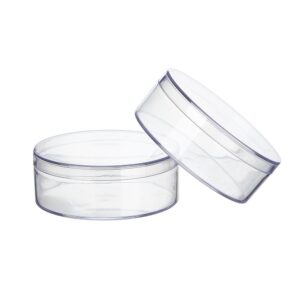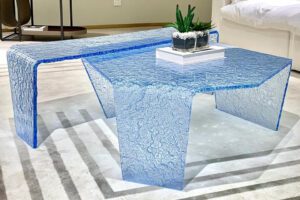Summary
Acrylic fabrication refers to the process of shaping and manipulating polymethyl methacrylate (PMMA), a versatile thermoplastic known for its clarity, strength, and lightweight characteristics. Since its development in the early 20th century, acrylic has found extensive applications across various industries, including signage, furniture, healthcare, art, and architecture, due to its durability and aesthetic appeal. The ability to easily mold and fabricate acrylic into complex designs has cemented its status as a popular choice for both functional products and artistic expressions.
The significance of acrylic fabrication lies not only in its practical applications but also in the historical context of PMMA’s emergence and evolution. Initially utilized for household painting in the 1930s, acrylic gained prominence in post-war indus- tries requiring transparent and shatter-resistant materials, such as aerospace and automotive sectors. Its rapid acceptance in the art community further underscores its versatility, fostering innovative artistic movements throughout the latter half of the 20th century.
Despite its advantages, acrylic fabrication is not without controversy. Concerns regarding the environmental impact of acrylic production and disposal have emerged, particularly related to plastic pollution and the sustainability of materials. Regu- latory measures and industry initiatives aimed at improving recycling practices and reducing reliance on fossil fuels are ongoing to mitigate these challenges. More- over, safety considerations during production and the potential health implications associated with unpolymerized materials add another layer of complexity to the discourse surrounding acrylic fabrication.
As technology evolves, advancements in recycling methods, the introduction of biodegradable alternatives, and the integration of automation are shaping the future of acrylic fabrication. These trends reflect a growing awareness of sustainability issues and highlight the industry’s efforts to innovate while addressing environmental concerns. Ultimately, acrylic fabrication remains a dynamic field, characterized by both its widespread utility and the ongoing dialogue surrounding its environmental and health impacts.
Table of Contents
History
Acrylic fabrication has its roots in the early 20th century, corresponding with the development of polymethyl methacrylate (PMMA), commonly known as acrylic. The history of acrylic itself began in the 1930s when chemists, including German chemist Otto Röhm, pioneered the synthesis of acrylic resin, laying the groundwork for future applications in both industry and art. Initially, the use of acrylic was largely confined to household painting, owing to its quick-drying properties and ease of cleaning. This early adoption was primarily influenced by its formulation as a polymer emulsion by BASF during the same period.
In the post-war era, acrylic found applications in areas requiring transparency and strength, such as aircraft windshields and submarine periscopes. Its lightweight nature, impact resistance, and versatility in molding further enhanced its appeal, leading to its integration into contemporary art and design. Artists began to explore the medium, recognizing its potential to innovate, which led to acrylic’s popularity in artistic movements throughout the latter half of the 20th century.
By the 1960s, the development of acrylic paint brought a new wave of excitement within the artistic community. This quick-drying, water-based medium allowed for a more fluid and spontaneous approach to painting, distinguishing itself from the traditional oil paint. The transition to water-based acrylics marked a significant milestone in both acrylic’s history and its applications in various fields, including architecture, lighting, and decorative arts, where it continues to be utilized extensively today.
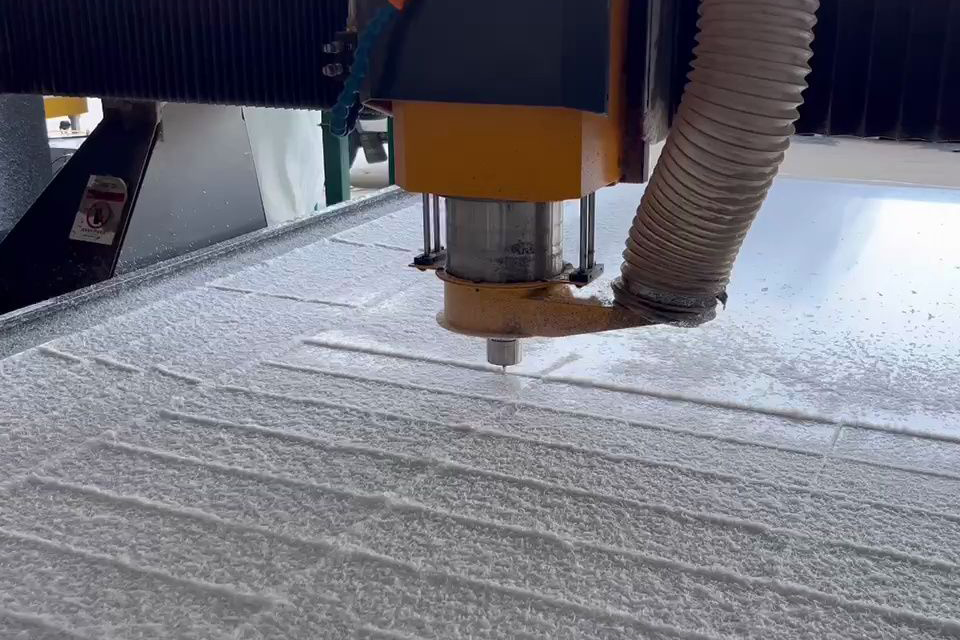
Materials Used
Acrylic fabrication primarily utilizes polymethyl methacrylate (PMMA), a versatile thermoplastic known for its transparency, strength, and lightweight characteristics. PMMA is created through the polymerization of methyl methacrylate (MMA), which can be derived from various raw materials, including natural gas, acetone, and methanol. The resulting acrylic material is durable and exhibits excellent optical clarity, making it suitable for a wide range of applications in both functional and artistic contexts.
Properties of Acrylic
Acrylic possesses several advantageous properties that contribute to its popularity in fabrication. It is significantly lighter than glass, offering ease of handling, especially
in large installations, while also being 17 times stronger and more shatter-resistant- . Additionally, acrylic’s resistance to UV light means it maintains its clarity over time, unlike glass, which can yellow with exposure to sunlight. The material can withstand temperatures up to 70°C continuously and up to 90°C for short periods, making it applicable in various environments.
Fabrication Techniques
Acrylic fabrication involves a variety of techniques that enable the transformation of acrylic sheets into finished products tailored to specific applications. The primary methods of fabrication include cutting, machining, forming, and finishing.
Cutting Methods
The cutting of acrylic sheets is a fundamental step in the fabrication process. Various techniques can be employed, including laser cutting, CNC routing, and sawing. Laser cutting is particularly noted for its precision, allowing for intricate designs that would be difficult to achieve through traditional methods.
Machining Processes
Machining is another crucial component of acrylic fabrication. This process is typi- cally executed using computer numerical control (CNC) machines, although manual methods may also be employed in some instances. Machining operations can include cutting, turning, routing, milling, drilling, and grinding. For achieving a smooth finish, operators may utilize buffing techniques, either by hand or with automated machines, to enhance the material’s aesthetic qualities.
Forming Techniques
Forming methods, such as line bending and drape forming, allow for the creation of shapes and structures from acrylic sheets. Line bending involves heating a specific area of the acrylic to create a bend, which can be fine-tuned by adjusting the width of the heated section. This technique can produce sharp bends when combined with a V-groove routing. Drape forming, on the other hand, utilizes heat and gravity to shape the acrylic into desired forms.
Finishing Techniques
Finishing processes are essential for achieving the desired visual and tactile qualities of acrylic products. Flame polishing is a commonly used method where a flame is ap- plied to the acrylic surface, melting it slightly to create a smooth, glossy finish. Additionally, traditional polishing compounds can be applied to achieve a high luster finish, requiring careful selection based on the desired outcome.
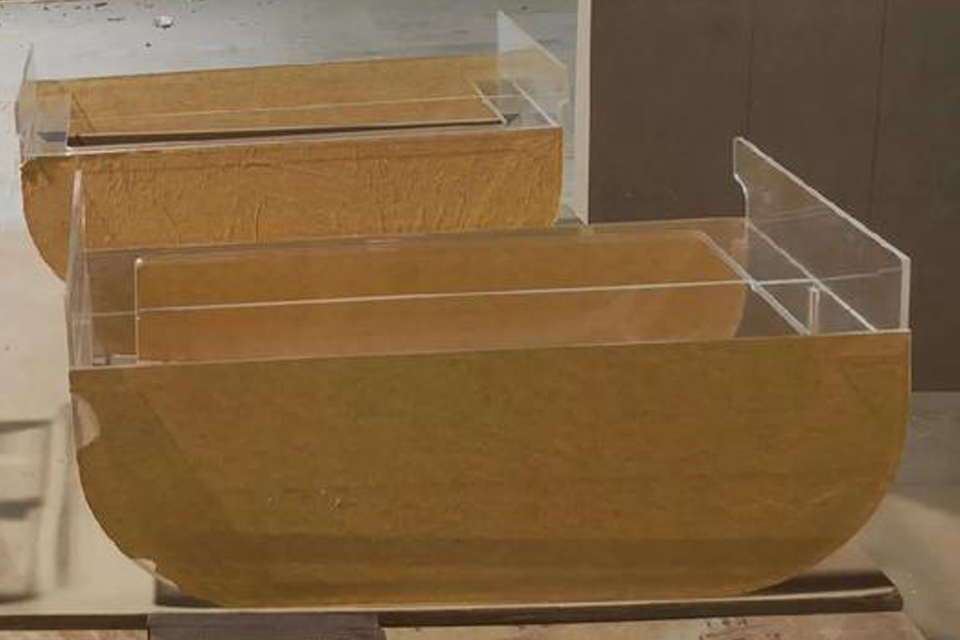
Fabrication Techniques
Acrylic fabrication involves a variety of techniques that enable the transformation of acrylic sheets into finished products tailored to specific applications. The primary methods of fabrication include cutting, machining, forming, and finishing.
Cutting Methods
The cutting of acrylic sheets is a fundamental step in the fabrication process. Various techniques can be employed, including laser cutting, CNC routing, and sawing. Laser cutting is particularly noted for its precision, allowing for intricate designs that would be difficult to achieve through traditional methods.
Machining Processes
Machining is another crucial component of acrylic fabrication. This process is typi- cally executed using computer numerical control (CNC) machines, although manual methods may also be employed in some instances. Machining operations can include cutting, turning, routing, milling, drilling, and grinding. For achieving a smooth finish, operators may utilize buffing techniques, either by hand or with automated machines, to enhance the material’s aesthetic qualities.
Forming Techniques
Forming methods, such as line bending and drape forming, allow for the creation of shapes and structures from acrylic sheets. Line bending involves heating a specific area of the acrylic to create a bend, which can be fine-tuned by adjusting the width of the heated section. This technique can produce sharp bends when combined with a V-groove routing. Drape forming, on the other hand, utilizes heat and gravity to shape the acrylic into desired forms.
Finishing Techniques
Finishing processes are essential for achieving the desired visual and tactile qualities of acrylic products. Flame polishing is a commonly used method where a flame is ap- plied to the acrylic surface, melting it slightly to create a smooth, glossy finish. Additionally, traditional polishing compounds can be applied to achieve a high luster finish, requiring careful selection based on the desired outcome.
Applications
Acrylic fabrication has become increasingly popular across various industries due to its versatility, durability, and aesthetic appeal. This section outlines some of the prominent applications of acrylic in different fields.
Signage
Acrylic is a favored material for signage because of its weather resistance and ability to be illuminated. Fabricated acrylic signs are suitable for both indoor and
outdoor use, effectively conveying information and attracting attention. The clarity and transparency of acrylic also contribute to high-quality visual presentations in signage.
Furniture
Acrylic furniture, such as chairs, tables, and shelving units, is renowned for its modern aesthetic and ability to create a sense of spaciousness. These pieces are lightweight and durable, often resembling glass while being significantly more resistant to break- age. The transparent nature of acrylic furniture enhances the openness of interior spaces, making it a popular choice in contemporary design.
Healthcare
In the medical field, acrylic is extensively used to create a variety of devices and equipment, including incubators, display enclosures, and laboratory apparatus. Its durability and ease of sterilization make acrylic an ideal choice for healthcare ap- plications, ensuring that medical instruments remain safe and hygienic for patient use.
Art and Décor
Artists and designers frequently utilize acrylic to create sculptures, installations, and decorative items. Its versatility allows for innovative and creative expressions, making acrylic a valuable medium in the art world. The ability to mold and shape acrylic enables the production of unique artistic pieces that add visual interest to any space.
Automotive and Aerospace
Emerging applications of acrylic in the automotive and aerospace industries highlight its potential beyond traditional uses. Acrylic can be utilized in components requiring lightweight yet robust materials, contributing to improved fuel efficiency and perfor- mance. This expanding use demonstrates the adaptability of acrylic in high-demand environments.
Building and Architectural Design
In architecture, acrylic is used to create sleek, monolithic forms that promote energy efficiency. It can be molded into various shapes, allowing architects to explore innovative designs while maximizing natural light and views. Additionally, the material is often employed in modern-style homes alongside glass, steel, and concrete for its aesthetic and functional qualities.
Advantages and Disadvantages
Acrylic fabrication offers numerous advantages that make it a popular choice in various industries.
Advantages
One of the primary benefits of acrylic is its durability. Acrylic is shatter-resistant and has a higher impact resistance than glass, making it suitable for high-traffic or public areas. Additionally, acrylic is lighter and stronger than glass, which facilitates easier handling and transportation. Its excellent optical clarity allows for up to 92% light transmission, providing a clear view without distortion, ideal for applications such as windows and display cases. The material is also weather-resistant, enabling it to withstand prolonged exposure to outdoor elements without significant deterioration. Acrylic’s versatility is evident in its ability to be easily molded and fabricated into complex shapes and designs, which allows for high customization options. Furthermore, acrylic is available in a variety of colors and finishes, enhancing de- sign flexibility and aesthetic appeal. The material is also relatively affordable compared to glass, making it a cost-effective solution for many projects.
Disadvantages
Despite its advantages, acrylic has some notable disadvantages. Primarily, acrylic exhibits poor wear and abrasion resistance, which can lead to surface scratches over time, especially in high-contact areas. Additionally, while acrylic can withstand impacts, it is not designed to handle heavy loads as effectively as glass. Another drawback is acrylic’s limited heat resistance; exposure to high temperatures can lead to warping or melting, restricting its use in applications where heat exposure is a concern. Lastly, although acrylic is considered non-toxic after polymer- ization, the material can be irritating and potentially carcinogenic in its unpolymerized form, which raises safety concerns during production.

Environmental Impact
The environmental impact of acrylic fabrication is closely tied to the broader issues surrounding plastic manufacturing and usage. Addressing plastic pollution yields numerous benefits, including reduced health impacts, increased recycling rates, and decreased consumption of new plastic materials.
Regulatory Landscape
While there are currently no direct regulations targeting the primary production of acrylics and other plastics, indirect effects arise from policies aimed at enhancing plastic recycling and decreasing dependence on fossil fuels. For example, global regulations such as China’s ban on imported waste have significantly altered waste management systems and the secondary market for plastics, including acrylics.
The emergence of civil society movements, driven by initiatives like the BBC’s Blue Planet series, has also spurred shifts in societal norms regarding plastic use. Regulations play a critical role in mitigating the environmental impact of acrylic and plastics manufacturing. They set standards for emissions, waste management, and energy consumption that manufacturers must adhere to. Initiatives like the Clean Air Act and Clean Water Act establish strict limits on emissions and discharge standards for production facilities, while the Resource Conservation and Recovery Act (RCRA) governs the disposal of hazardous waste. These regulations not only ensure compliance but also promote innovation, encouraging the development of more sustainable materials and processes.
Compliance and Challenges
Compliance with these regulations is essential for manufacturers to operate safely and responsibly, protecting both the environment and public health. Regulatory oversight is maintained through inspections and audits conducted by agencies like the Environmental Protection Agency (EPA) and the Occupational Safety and Health Administration (OSHA). Although meeting these regulations can present chal- lenges, they also create opportunities for manufacturers to innovate and improve their practices.
Sustainability Efforts
The sustainability initiatives shaping the acrylic fabrication industry include the de- velopment of biodegradable and bio-based alternatives, which minimize long-term environmental damage by reducing reliance on petroleum-based plastics. Ad- ditionally, advancements in recycling technologies are crucial, as they improve the recovery of materials and increase overall recycling rates, which is essential for reducing the environmental footprint of acrylic products.
Safety Considerations
Regulatory Compliance
Compliance with safety regulations is essential in acrylic fabrication to ensure the protection of workers and the environment. Manufacturers must adhere to various regulations, such as the Toxic Substances Control Act (TSCA), which requires the reporting and testing of chemical substances used in production to prevent un- reasonable health or environmental risks. Non-compliance can lead to severe consequences, including legal penalties, business disruptions, and reputational dam- age.
Material Selection and Testing
Acrylic manufacturers must practice increased vigilance in material selection and testing to ensure that the raw materials used are safe and sustainable. This involves
thorough inspections of materials for uniformity and purity prior to production. The FDA has emphasized the importance of evaluating the long-term performance and safety of materials used in medical devices, highlighting a growing trend towards sus- tainable and recyclable alternatives. As states implement stricter plastic usage regulations, manufacturers face additional operational challenges that can impact both compliance and profitability.
In-Process Quality Control
During the fabrication process, regular quality checks are vital to ensure that acrylic products meet industry standards. These checks should include assessments of dimensional accuracy, surface integrity, and structural durability. Implementing robust in-process inspections can help identify defects early, minimizing waste and ensuring consistent quality throughout production. Post-Production Safety Measures Post-production testing is also crucial for verifying that acrylic products are free from defects and meet safety specifications. Advanced testing methods, including optical inspections and mechanical testing, help ascertain the quality of the finished product. Proper handling and storage of acrylic materials, along with routine maintenance and minor repairs, are necessary to prolong the lifespan of products and ensure their safety in use.
Environmental and Health Implications
Acrylic is commonly utilized in various applications, including medical and laboratory equipment, due to its non-toxic and shatter-resistant properties. However, it is essential to consider the environmental impact of acrylic production and end-of-life disposal. Efforts towards sustainable production methods, recycling, and reducing waste can mitigate negative effects on both health and the environment. By focusing on responsible practices, the acrylic fabrication industry can contribute to a safer and more sustainable future.
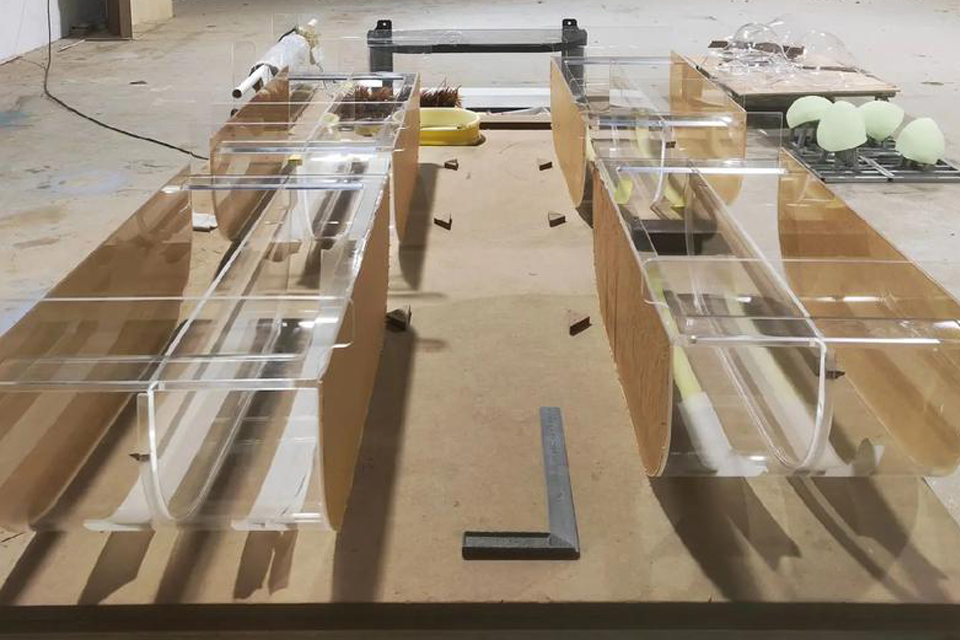
Future Trends
Advancements in Recycling Technologies
The field of acrylic fabrication is increasingly influenced by the evolution of recy- cling technologies, particularly in response to the growing environmental concerns associated with plastic waste. Breakthrough technologies are expected to enhance the sustainability of acrylic production and recycling processes, leading to a more circular economy. For instance, advanced mechanical recycling technologies are being developed to improve the efficiency of recycling acrylic materials, allowing for higher-quality recycled products and reducing the demand for virgin materials[- 36].
Integration of Biodegradable and Bio-Based Plastics
Another emerging trend is the incorporation of biodegradable and bio-based plastics in acrylic fabrication. These materials, made from renewable sources like sugarcane and corn starch, can significantly reduce reliance on petroleum-based plastics. Their ability to decompose under specific conditions may present new opportunities for sustainable practices within the industry, although challenges remain regarding compatibility with traditional recycling systems.
AI and Automation in Manufacturing
The adoption of artificial intelligence (AI) and automation is transforming the acrylic fabrication process. AI-powered sorting systems are enhancing the sorting of recy- cled plastics, improving the quality of recycled inputs for acrylic products. Addition- ally, automation in fabrication processes, such as CNC routing and laser cutting, increases precision and reduces waste, further supporting sustainable production methods.
Innovative Fabrication Techniques
Advancements in fabrication techniques, including CNC laser cutting and diamond polishing, are allowing for more complex and aesthetically pleasing acrylic designs. These technologies not only enhance the quality of the finished products but also contribute to minimizing material waste during production, thus promoting sustain- ability.
Research and Development Focus
Ongoing research into recycling methods, including microbial decomposition and electrochemical recycling, is vital for addressing the challenges posed by acrylic waste. These innovative approaches could potentially offer more eco-friendly options for breaking down and recycling acrylic materials, contributing to a more sustainable future for the industry.





